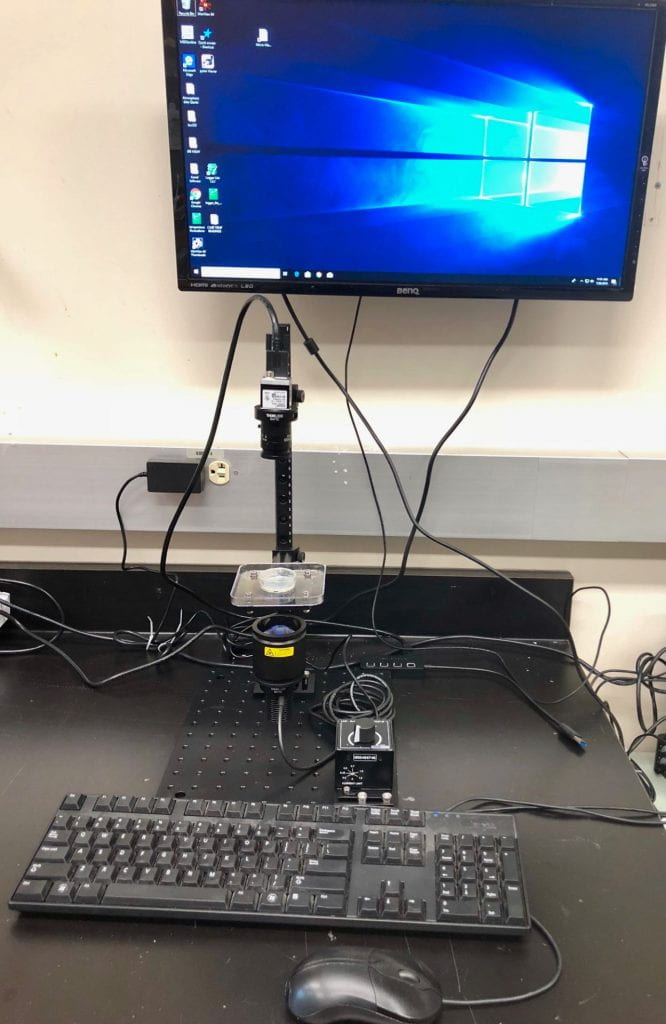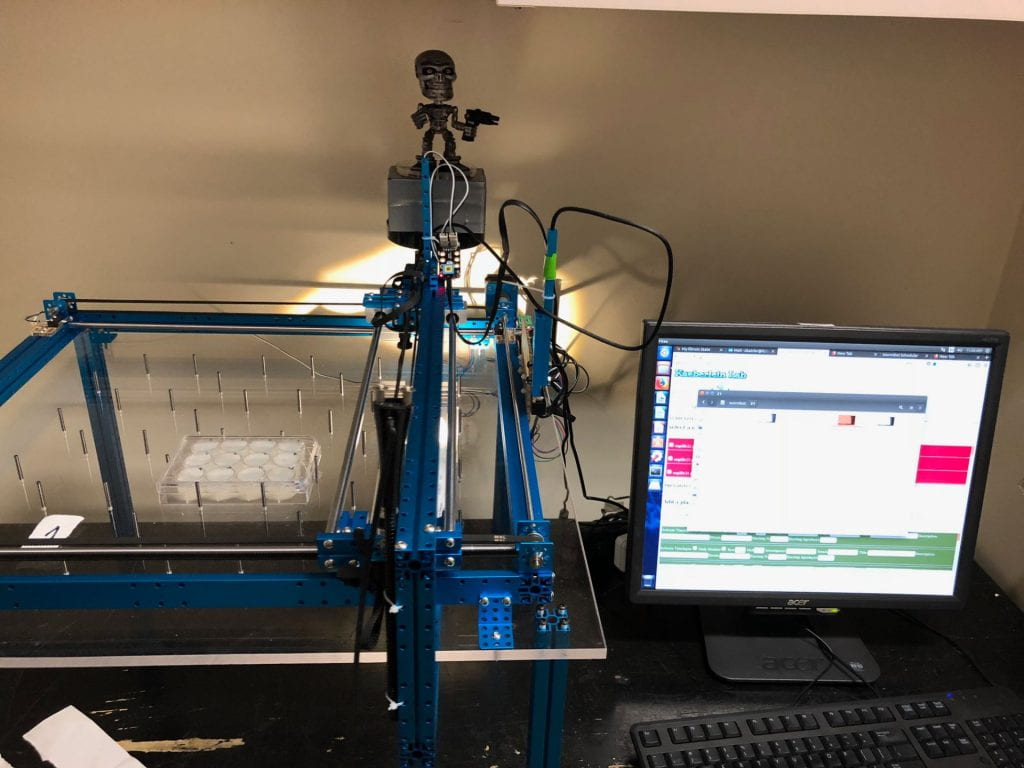At the molecular neuroethology lab we use a variety of techniques in order to dissect the neural and genetic bases of behavior. Below is a tour of the equipment we are fortunate to have at our disposal as well as their most common use.
Location
We are located on the third floor of the Laboratory Science Building at Illinois State University, Normal, Illinois.

125 S. Fell Avenue,
Normal IL, 61761

Facility
Here are a couple of panoramic views of our lab.


Equipment
List of the equipment we use in our lab and what it is commonly used for:

Confocal Microscope:
We recently acquired a confocal microscope in collaboration with the Gatto and Mortimer labs. This Zeiss LSM510 META confocal microscope is equipped with a motorized stage, and several detectors that allow us to create high resolution images of worm tissues in our own time. The microscope is used by a handful of labs and by the classes taught by t he PIs.


Injection and Calcium Rig:
In order to create transgenic animals, we use this inverted microscope (AxioVert A1) equipped with a Narashige hydraulic manipulator. We also use the Optimos camera mounted on its side to make measurmemnts of calcium transients in the neurons of worms. The setup rest on an TMC antivibration table.

Epifluorescence Rigs:
Our lab has two Olympus stereo microscopes with 0.5x and 1x objectives and a multi-mirror LED base. We use two light sources. A halogen light source provides strong (dimable) illumination, while a solid state (LED) light source provides noise-free illumination. Our scopes are equiped with different filter configurations and can image smaples expreesing GFP, RFP, mCherry, CFP, and GFP/RFP simultaneously. We use a flea2 USB camera to film animals singly or in populations.

Worm Tracker:
We use the worm tracker designed by our friend Gal Haspel at NJIT. The trackers uses infrared light and camera to film worms while they are behaving in the test arena. We are able to obtain the trajectory and body shapes of many animals at the same time while they perform different actions.

Worm Robot:
This is or worm terminator. A robot created by the Kaeberlain lab’s Jason Pitt. Our terminator can track the life and death of worms in 144 independent treatment wells without our help or interference. We use it to conduct forward and reverse screens in order to identify genes associated with different behavioral or disease processes.

Magnetic Cage:
This is a triple magnetic coil system we use to create magnetic fields and test the ability of worms to detect and orient to magnetic fields. Each set of four squares creates a field in the x, y, and z direction.

3D Printer:
We have a Robo R1 3D printer to help us manufacture custom equipment tailored for our experiments. The printer resides in our laboratory but is available to everyone in the department.